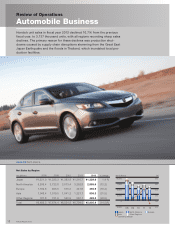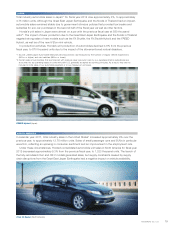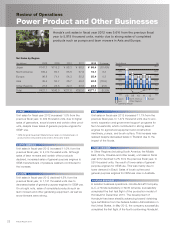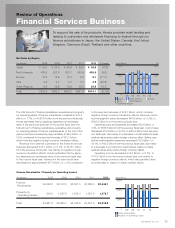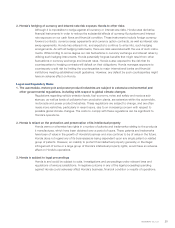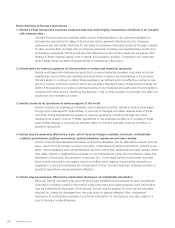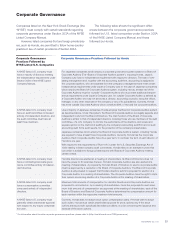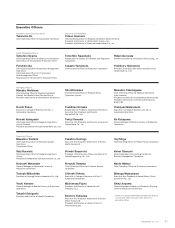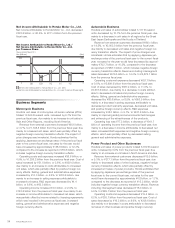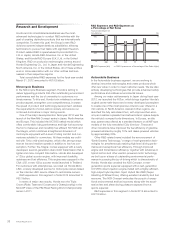Honda 2012 Annual Report Download - page 30
Download and view the complete annual report
Please find page 30 of the 2012 Honda annual report below. You can navigate through the pages in the report by either clicking on the pages listed below, or by using the keyword search tool below to find specific information within the annual report.10. U.S. investors may have difficulty in serving process or enforcing a judgment against the Company or its
directors, executive officers or corporate auditors
The Company is a limited liability, joint stock corporation incorporated under the laws of Japan. Most
of its directors, executive officers and corporate auditors reside in Japan. All or substantially all of the
Company’s assets and the assets of these persons are located in Japan and elsewhere outside the
United States. It may not be possible, therefore, for U.S. investors to effect service of process within
the United States upon the Company or these persons or to enforce against the Company or these
persons judgments obtained in U.S. Courts predicated upon the civil liability provisions of the Federal
securities laws of the United States. There is doubt as to the enforceability in Japan, in original
actions or in actions for enforcement of judgment of U.S. courts, of liabilities predicated solely upon
the federal securities laws of the United States.
11. The Company’s shareholders of record on a record date may not receive the dividend they anticipate
The customary dividend payout practice and relevant regulatory regime of publicly listed companies
in Japan may differ from that followed in foreign markets. The Company’s dividend payout practice is
no exception. While the Company may announce forecasts of year-end and quarterly dividends prior
to the record date, these forecasts are not legally binding. The actual payment of year-end dividends
requires a resolution of the Company’s shareholders. If the shareholders adopt such a resolution, the
year-end dividend payment is made to shareholders as of the applicable record date, which is cur-
rently specified as March 31 by the Company’s Articles of Incorporation. However, such a resolution
of the shareholders is usually made at an ordinary general meeting of shareholders held in June. The
payment of quarterly dividends requires a resolution of the Company’s Board of Directors. If the
board adopts such a resolution, the dividend payment is made to shareholders as of the applicable
record dates, which are currently specified as June 30, September 30 and December 31 by the
Articles of Incorporation. However, the board usually does not adopt a resolution with respect to a
quarterly dividend until after the respective record dates.
Shareholders of record as of an applicable record date may sell shares after the record date in
anticipation of receiving a certain dividend payment based on the previously announced forecasts.
However, since these forecasts are not legally binding and resolutions to pay dividends are usually
not adopted until after the record date, our shareholders of record on record dates for year-end and
quarterly dividends may not receive the dividend they anticipate.
Annual Report 201228


